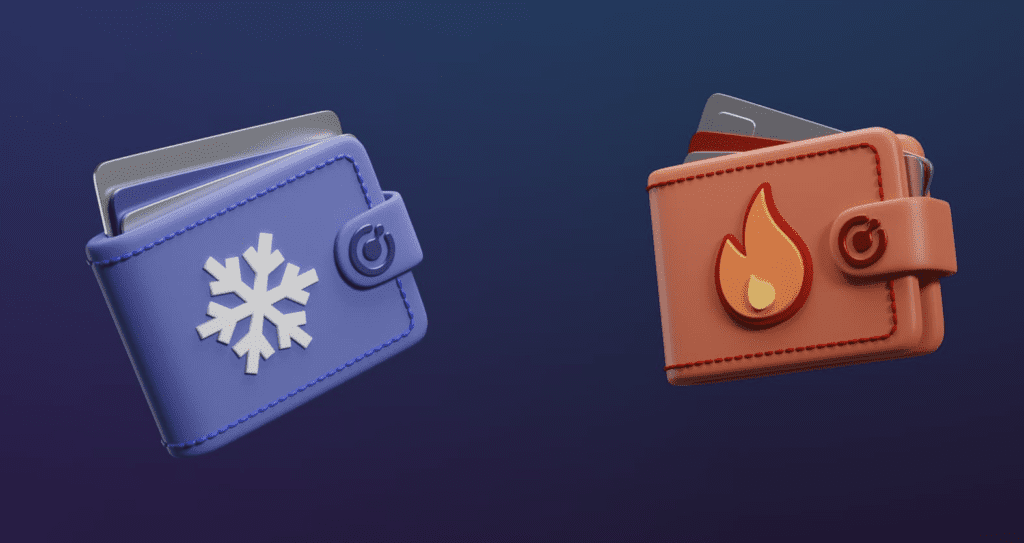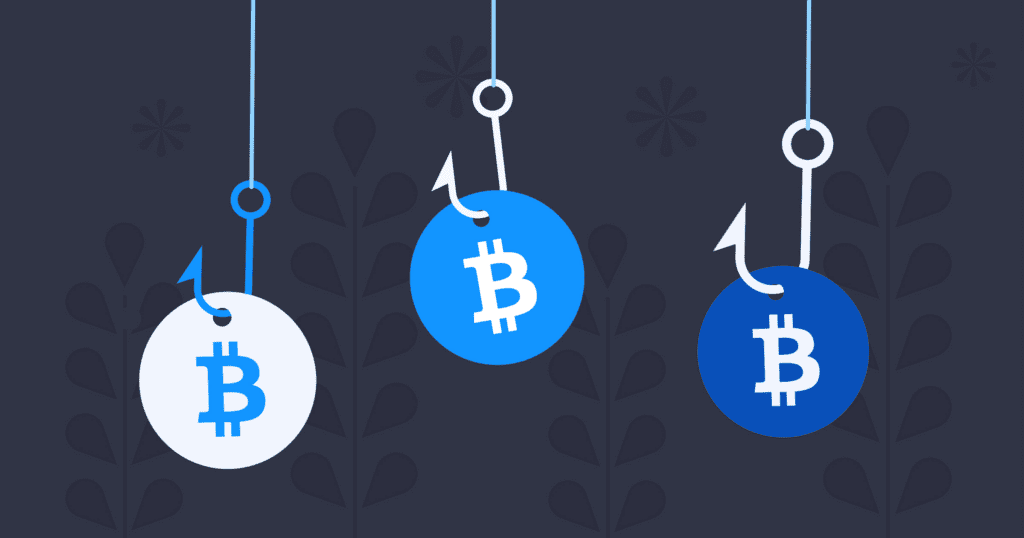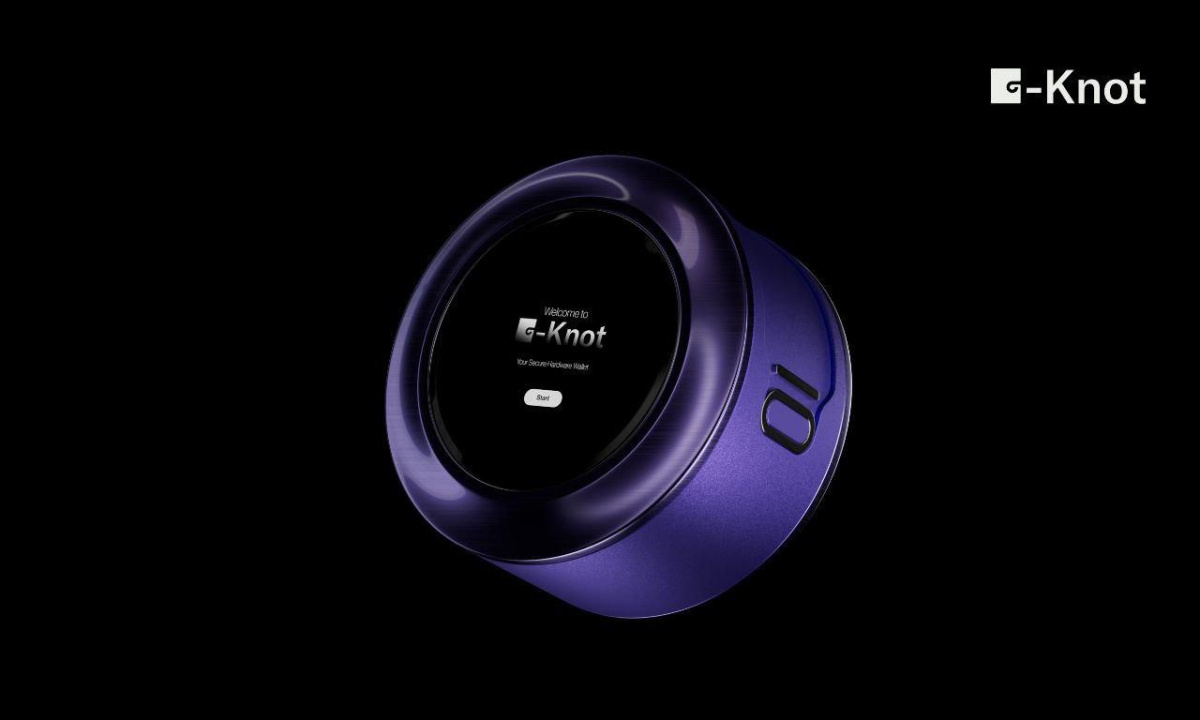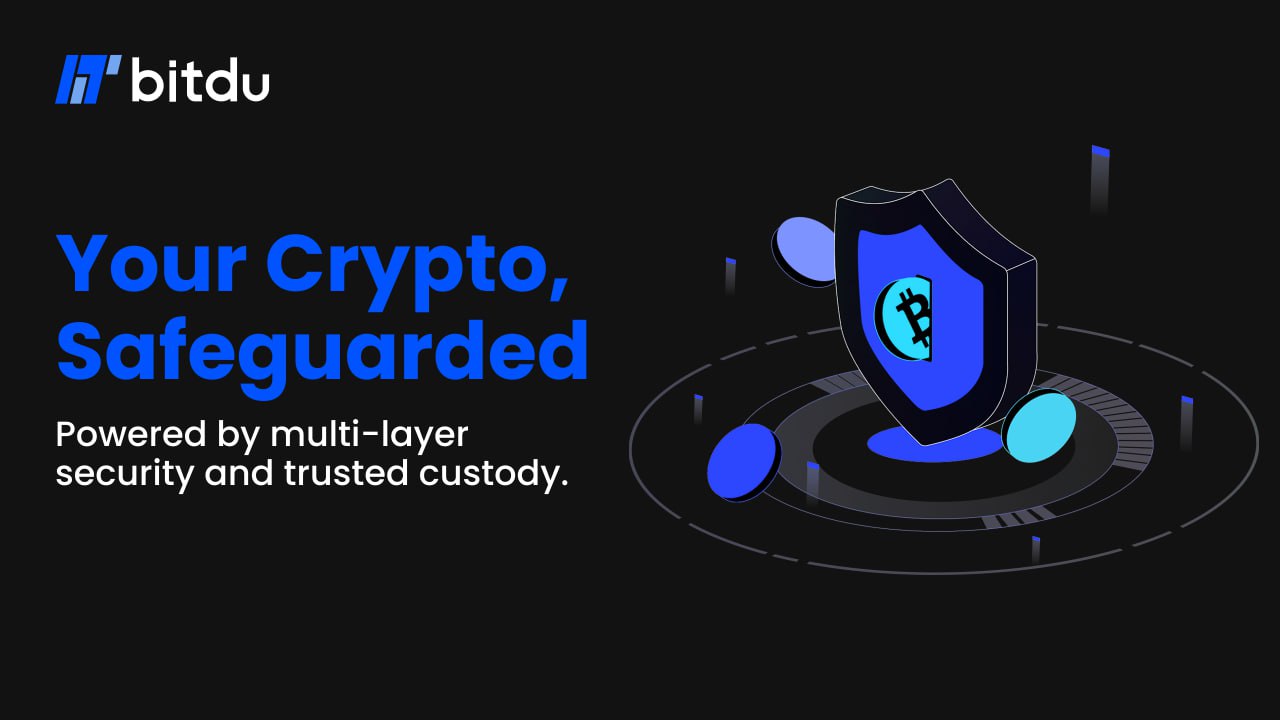Crypto wallets are an indispensable part of the crypto world. Today, Coincu will guide you on how to create a crypto wallet and the basics of crypto wallets.

What is a crypto wallet?
Cryptocurrency, being an abstract store of value, lacks tangible tokens like coins or bills. Instead, it exists as a code string on a blockchain. When you acquire Bitcoin (BTC), you’re essentially obtaining a public key and a private key on the BTC blockchain.
In the realm of cryptocurrency, understanding the basics of crypto wallets is fundamental. Unlike traditional wallets that physically house cash and cards, crypto wallets are digital storage tools designed to safeguard access to your digital assets.
These wallets serve as repositories for users’ public and private keys, offering a user-friendly interface for managing crypto balances and facilitating blockchain transactions. Some wallets even empower users to engage in activities such as buying/selling and interacting with decentralized applications (dApps).
It’s crucial to grasp that cryptocurrency transactions don’t involve the direct transfer of tokens between mobile devices. Instead, a user’s private key signs the transaction, broadcasting it to the blockchain network. The network then updates the balances in both the sender’s and recipient’s addresses.
Contrary to the term ‘wallet,’ crypto wallets don’t store cryptocurrency, akin to physical wallets holding cash. They access the public ledger to display balances and secure private keys for transactions. The public key functions like a bank account number, shareable but without direct access to funds. In contrast, the private key acts as a password, granting access to your crypto—sharing it risks potential theft.
Losing the private key means forfeiting access to your crypto, emphasizing the critical need to secure it within a crypto wallet. In this digital landscape, understanding and safeguarding these keys are paramount to navigating the world of cryptocurrency securely.
Contrary to popular belief, a crypto wallet doesn’t technically store your cryptocurrency. Instead, it safeguards your private and public keys. These keys play a pivotal role in allowing the wallet to interpret your data on the public blockchain ledger, providing a visual representation of your balances. Let’s delve briefly into the significance of these keys, unraveling the cryptographic essence that underpins the security and functionality of crypto wallets.

How does a crypto wallet work?
Contrary to common belief, a crypto wallet doesn’t physically hold the digital coins but rather safeguards the keys essential for accessing and managing them on public blockchain networks.
A crypto wallet, a fundamental tool for cryptocurrency users, stores both public and private keys crucial for executing transactions, whether it’s sending, receiving, or storing cryptocurrency. The efficiency and security of these transactions hinge on the type of wallet a user employs.
There are different forms of crypto wallets, including hot wallets, which are online and connected to the internet. These are typically provided by the company through which users purchase cryptocurrency. A hot wallet acts as a digital repository for the keys, allowing users to interact with their digital assets seamlessly.
Analogous to traditional wallets that carry fiat currency, bank cards, and credit cards for access to funds, a crypto wallet serves as a secure container for the privileged credentials required to engage with a specific cryptocurrency’s blockchain. Unlike a physical wallet, however, the content of a crypto wallet is intangible—it holds information rather than the currency itself.
In the traditional banking system, users receive account numbers to facilitate transactions. Similarly, in the cryptocurrency realm, the public key plays a comparable role to a bank account number. Yet, possessing just a public key, much like having an account number, is insufficient to conduct a comprehensive set of transactions.
The blockchain operates on a public key infrastructure model for cryptography. Both the public and private keys are exclusive to users holding a specific asset or cryptocurrency. To access and transfer cryptocurrency, both keys are imperative. The private key, akin to a personal identification number for a bank account, is essential for accessing the asset securely on a blockchain.
Types of crypto wallet
Two primary types of crypto wallets have emerged to address this concern: hot wallets and cold wallets.
Hot Wallets: Connected Convenience with Risks
Hot wallets, as the name suggests, are always connected to the Internet. This category encompasses various forms, including web-based wallets, mobile wallets, and desktop wallets. The critical distinction between hot and cold wallets lies in their online connectivity. The accessibility of hot wallets makes them vulnerable to potential security breaches, as hackers can exploit hidden vulnerabilities in computer networks.
Private keys in hot wallets are stored and encrypted on the online application itself. While convenient for regular transactions, storing substantial amounts of cryptocurrency in a hot wallet is considered risky due to the increased susceptibility to hacking attempts. However, users can mitigate these risks by opting for hot wallets with robust encryption or by utilizing devices that store private keys in secure enclaves.
For individuals with diverse needs, it’s common to maintain multiple cryptocurrency wallets, combining both hot and cold options. This strategy allows users to balance accessibility and security based on their preferences and risk tolerance.
Cold Wallets: Offline Security Measures
In contrast, cold wallets operate entirely offline, providing a heightened level of security. While not as convenient for frequent transactions, cold wallets are favored for long-term storage due to their resistance to online threats. Examples of cold wallets include paper wallets and hardware wallets.
A physical medium, such as a piece of paper or an engraved metal sheet, can serve as a secure storage method for cold wallets. The offline nature of cold wallets shields them from online vulnerabilities, offering a robust solution for those prioritizing long-term asset protection.

Beyond this, wallets can be categorized into custodial and non-custodial types, each with distinct features and considerations.
Custodial Wallets: Balancing Convenience with Trust
Custodial wallets, commonly found on cryptocurrency exchanges, prioritize convenience and user-friendliness. Popular among both newcomers and experienced traders, these wallets streamline transactions but come with a trade-off: users relinquish full control of their tokens, and private keys necessary for transactions are held exclusively by the exchange.
This reliance on service providers necessitates a trust in their security measures. Two-factor authentication (2FA), email confirmation, and biometric authentication add layers of protection. Some exchanges enforce these measures before permitting transactions, ensuring a robust security framework. To further safeguard users’ assets, custodial providers often transfer a portion of funds to a secure cold wallet, beyond the reach of online threats.
Non-Custodial Wallets: Empowering Users with Full Control
In contrast, non-custodial wallets empower users with complete control over their funds. The private key is stored locally, typically in the form of a recovery, seed, or mnemonic phrase. Generating public and private keys from this phrase allows users to maintain access to their assets, acting as a vital recovery mechanism in case of device loss.
The responsibility of safeguarding the seed phrase falls squarely on the user. Losing access to this phrase means losing access to funds, making it imperative to store it securely and avoid digital copies. Hardware wallets, inherently non-custodial, store private keys on the device itself. Software-based non-custodial wallets, exemplified by the Crypto.com DeFi Wallet, follow the same principle, placing full control in the hands of the user.
As the saying goes within the crypto community, ‘not your keys, not your coins!’ This underscores the critical importance of users taking charge of their own security, from password management to the safe storage of seed phrases. Unlike custodial options, recovery in non-custodial scenarios can be challenging or impossible, given that vital information is typically not stored on third-party servers.
How to create a crypto wallet?
Below, we outline the essential steps to guide you in creating your very own software crypto wallet.
Step 1: Choose a Trusted Software Wallet App
The foundation of a reliable software crypto wallet starts with choosing the right provider. Numerous options exist in the market, each with unique features and security measures. Before making a selection, conduct thorough research. Among the standout choices are Exodus, Electrum, and Trust Wallet, each renowned for their robust security protocols and user-friendly interfaces.
Step 2: Download the Wallet App Securely
Once you’ve identified your preferred software wallet, download the application to your computer or mobile device. Ensuring that you download the app from the official app store or the wallet provider’s website is crucial to avoiding potential security compromises from malicious software. Having the wallet app installed ensures convenient access to your crypto assets whenever required.
Step 3: Create Your Account Securely
With the app installed, proceed to create your account. This typically involves providing basic information such as your name and email address, along with establishing a strong password. Some wallet providers may request additional steps, such as identity verification through a government-issued ID and a selfie. This extra layer of security helps safeguard your wallet and its contents.
Step 4: Initiate Asset Transfers
Once your software crypto wallet is set up, it’s time to populate it with assets. This can be accomplished through various means, including depositing funds from a bank account, exchanging cryptocurrencies, or receiving assets from another wallet. Most software wallets support a range of cryptocurrencies, facilitating the transfer of diverse assets. To fund your wallet, obtain the wallet address and use it to execute the transfer. Some wallets even support the use of QR codes, simplifying the transfer process.
Crypto wallet security
As crypto enthusiasts navigate the complexities of the digital realm, understanding and mitigating risks become crucial for safeguarding assets. Below, we delve into two prominent security threats associated with crypto wallets and explore strategies to fortify defenses.
Phishing Attacks
One prevalent risk in the crypto space is phishing attacks, where attackers employ cunning methods to extract sensitive information from unsuspecting users. Phishing attempts often manifest in seemingly harmless formats, making them challenging to detect, especially for individuals not hyper-vigilant about security.
Protecting against phishing requires heightened awareness and diligence. Users are advised to scrutinize communication channels, verify the legitimacy of requests, and employ multi-factor authentication to add an extra layer of security to their accounts.

Revealing Private Keys
The choice between storing mnemonic keys on a wallet provider’s sentry servers or adopting a more decentralized approach poses a significant security challenge. While keeping mnemonic keys on servers can enhance performance optimization and error management, it also introduces vulnerabilities.
In cases where providers opt to store mnemonic keys, it is imperative to ensure a secure environment. Engaging third-party auditors becomes crucial to assess and verifying the robustness of the security measures in place. This proactive step helps mitigate the risk of unauthorized access and potential exploitation of vulnerabilities within the key management system.
Crypto enthusiasts are urged to thoroughly research wallet providers, opting for those employing best practices in key management. Embracing decentralized options when feasible can further enhance security, ensuring a more resilient defense against potential threats.
How to choose a crypto wallet
Here’s a comprehensive guide to aid users in making an informed choice:
Security Features: Fortifying Your Digital Fortress
Prioritize wallets that prioritize security with robust features such as two-factor authentication, multi-signature support, and encryption. Investigate the wallet’s security track record, assessing whether it has stood resilient against cyber threats or if it has ever fallen victim to hacking attempts. This diligence ensures that your digital assets are shielded against potential vulnerabilities.
User-Friendliness: Seamlessly Navigate the Digital Realm
Opt for a wallet that boasts a user-friendly interface, ensuring ease of use for both novice and experienced users. The chosen wallet should support the specific cryptocurrencies you intend to store and offer a straightforward backup and recovery process. A user-friendly design enhances the overall experience, making cryptocurrency management accessible to all.
Reputation: Trustworthy Foundations Matter
Conduct thorough research into the reputation of the wallet provider. Delve into user reviews and feedback to gauge the experiences of others. Explore the company’s history, scrutinizing its management team and any noteworthy events in its past. A reputable provider instills confidence in the security and reliability of the chosen wallet.
Compatibility: Syncing with Your Digital Ecosystem
Ensure that the selected wallet is compatible with your device and operating system, whether it’s iOS or Android. Compatibility ensures seamless integration with your digital ecosystem, allowing for efficient management of your cryptocurrency portfolio.
Fees: Balancing Cost and Security
While seeking affordability, be cautious of wallets offering exceptionally low fees, as this may compromise on security or reliability. Look for wallets that charge reasonable fees for transactions and account maintenance, striking a balance between cost-effectiveness and the assurance of a secure platform.
Customer Support: A Lifeline in Times of Need
Choose a wallet provider that prioritizes customer support. Opt for a service with reliable and responsive support channels to address any issues or queries promptly. A robust support system is a crucial lifeline, ensuring a smoother user experience and swift resolution of any challenges encountered.
Conclusion
The above article has helped you understand how to create a crypto wallet. In the realm of cryptocurrency, there’s no perfect solution for wallets. Each type comes with its strengths, purposes, and trade-offs. Users often find the ideal balance between convenience and security by combining both cold and hot wallets, recognizing the risks associated with storing large quantities of coins in a single wallet.
DISCLAIMER: The information on this website is provided as general market commentary and does not constitute investment advice. We encourage you to do your own research before investing.
























